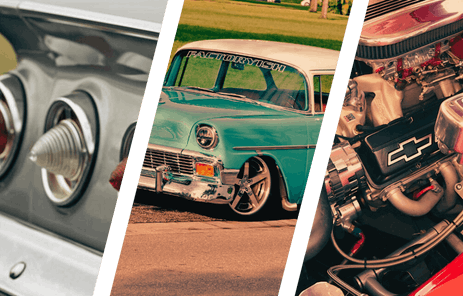Tri Star Engines, of Baldwin, Wisconsin, has had a fairly good run of things since its start in 1988. With over 90,000 square feet of space devoted to manufacturing and storage, it can lead one to wonder what they do to make the stuff they make, and how they do it.
 Tri Star was more than happy to share this knowledge with all of us, and now we have an eight-part tour to view at our pleasure.
Tri Star was more than happy to share this knowledge with all of us, and now we have an eight-part tour to view at our pleasure.
In part one, we learn about their cylinder block machining and blueprinting process, and get to see some cool uses of the Rottler F67A CNC machining apparatus. In the video, it’s being used to drill and bore out holes of an engine block.
Tri Star uses the Rottler to bore, deck, align hone, and finish hone all of their engine blocks.
Part two tells us that after initial inspection, all guides for the engines are machined to final specs, while the valve seats are machined to bring them to their best state.
The cylinder heads are 100% pressure-tested, and the gasket surface is finish-machined to the highest levels of satisfaction. The last step in this stage is to vacuum test the cylinder heads, so as to ensure proper valve sealing on the motor.

Part three brings us to the crankshafts, which get machined to OEM requirements and then micro-polished on the high-tech QPAC polishing machine. While extremely expensive, the QPAC machine repeatedly proves its worth day in and day out, and it shows!
It’s one more reason to trust Tri Star’s products.
Part four exposes the next phase: crankshaft balancing. You really start to gain an appreciation for all the hard work that Tri Star puts into each and every one of engines, especially when you see their technicians using a Fentech balancer to iron out any kinks found in the crankshafts.
 Part five explores the elbow grease devoted to machining connecting rods. Here, the technicians hone the rods multi-directionally to prevent bell mouthing or tapering, and then inspect them for bend and twist before installation.
Part five explores the elbow grease devoted to machining connecting rods. Here, the technicians hone the rods multi-directionally to prevent bell mouthing or tapering, and then inspect them for bend and twist before installation.
This process makes Tri Star a unique service provider, and one that’s sought out by other manufacturers to do the job for them.
Part six is the cleaning stage, and is every bit as necessary and stringent as the other steps. Flecks, flakes, loose pieces, and other detritus are removed from the engines with vigorous attention and effort.
Part seven is assembly and testing, where the engines are put together and given a penultimate run-through to make sure these engines will actually work when you install them into your Chevy. Some of the trusted brands of tools used include Federal Mogul, Perfect Circle, Victor, and Melling.
Finally, we reach part eight, which is the dyno test. Here, the crew at Tri Star go above and beyond the normal expectations by subjecting the motor to real-life conditions: pulling a load, and then being tuned and tweaked until it performs to the expected degree.
Tri Star sets the curve on the distributor to a particular application setting, then tunes the system to achieve the proper air-to-fuel ratio.
With Tri Star’s engines, you know you’re getting one of the best in the business. And it’s not just because of the name or good press, no; it’s because you can see it for yourself!
Be sure to like them on Facebook so you can stay up-to-date on all of their products and events.
You might also like
Get 10% Off With Strange Engineering's Black Friday Sale
Get 10% off top components with the Strange Engineering Black Friday Sale from November 19th to December 1st



